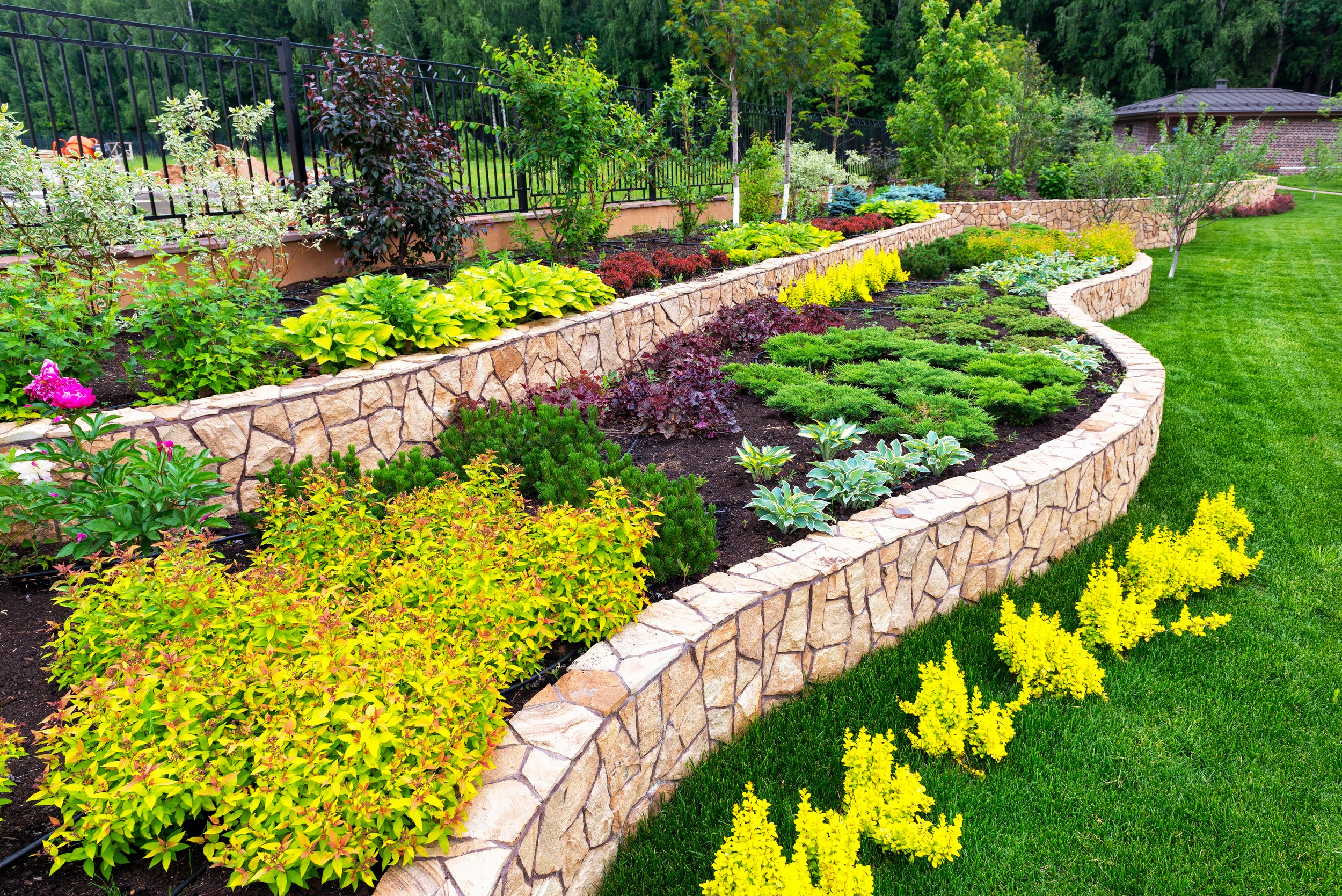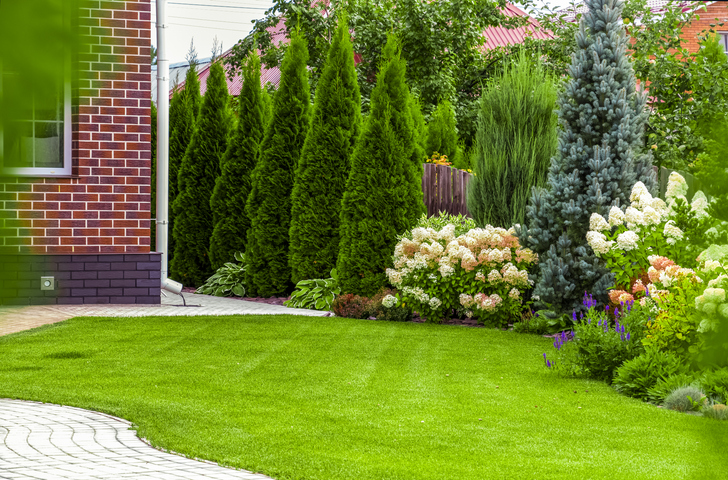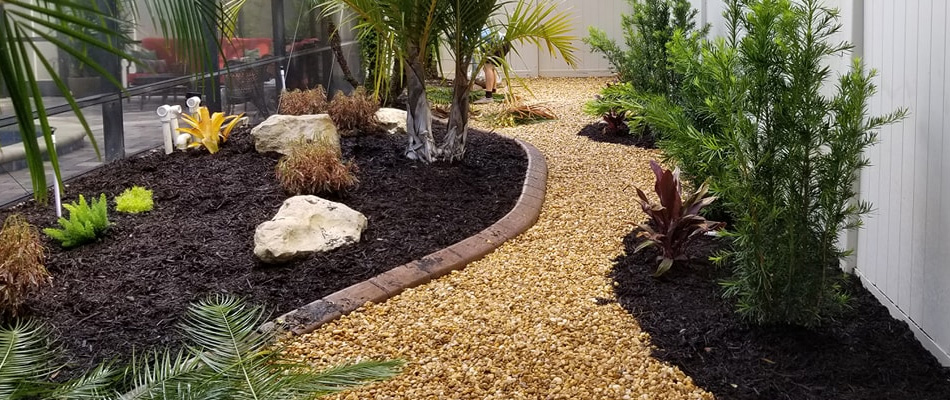Hilton Head Landscapes Fundamentals Explained
Wiki Article
Hilton Head Landscapes Fundamentals Explained
Table of ContentsThings about Hilton Head LandscapesThe Buzz on Hilton Head LandscapesThe Facts About Hilton Head Landscapes RevealedHilton Head Landscapes - The FactsHilton Head Landscapes Can Be Fun For EveryoneTop Guidelines Of Hilton Head LandscapesHow Hilton Head Landscapes can Save You Time, Stress, and Money.The Basic Principles Of Hilton Head Landscapes
Kind compatibility is also a major part of unity in designone or 2 strikingly different forms benefit contrast and emphasis, however typically all other forms ought to have some similarities for a linked appearance. Texture refers to exactly how coarse or fine the surface of the plant or hardscape material really feels and/or looks.
Instances of plants with crude structure include philodendrons, agaves, bromeliads, hollies, hands, and hydrangeas. Features that produce fine structure consist of little foliage; slim, strappy fallen leaves (turfs) or high, thin stems; tiny, thick twigs and tiny branches; long stems (creeping plants); and little, fragile flowers.
8 Simple Techniques For Hilton Head Landscapes
Many plants are moderate appearance, because they can not be referred to as having either rugged or fine texture. They are identified by medium-sized fallen leaves with basic shapes and smooth sides. The average-sized branches are not largely spaced neither extensively spaced, and the overall type is commonly rounded or mounding. Medium-textured plants function as a background to link and unify the rugged- and fine-textured plants.
To make an area feel smaller sized, put the crude appearances along the external boundary and the fine structures closest to the viewer. The detail of the rugged appearance makes the plants appear closer and makes the space feel smaller sized. The perceived structure of plants can likewise alter with the range from the plant.
Unknown Facts About Hilton Head Landscapes
Vibrant colors increase the contrast and make the appearance show up coarser, while low-key colors can flatten texture. Hardscape with a rugged texturesuch as really harsh rocks and bold, big timberstends to make all plant material appear extra moderate distinctive. Developers frequently develop a texture research (Figure 8) theoretically to aid choose the setup of plant materials.Number 8. Structure research. Color in plant product and hardscape adds passion and range to the landscape. Color is one of the most noticeable element in the landscape and is generally the emphasis of many homeowners; nonetheless, it is additionally the most short-lived aspect, generally lasting only a few weeks a year for individual plants.
Fascination About Hilton Head Landscapes
A simple summary of the color wheel consists of the 3 primaries of red, blue, and yellow; the three second shades (a mix of 2 primaries) of eco-friendly, orange, and violet; and 6 tertiary shades (a mix of one surrounding main and second color), such as red-orange. Color theory clarifies the relationship of colors per various other and exactly how they ought to be made use of in a structure.
Analogous (often called unified) shade plans are any type of 3 to five colors that are nearby on the shade wheel, such as red, red-orange, orange, yellow-orange, and yellow, or blue, blue-violet, and violet (landscaping hilton head sc). The shades are relevant to each other since they commonly consist of 2 primary colors mixed to form a secondary and two tertiary colors, which implies they share common residential properties
Corresponding shades are typically discovered naturally in flowers; an usual set is yellow and violet. Color is found in the blossoms, foliage, bark, and fruit of plants.
The Best Strategy To Use For Hilton Head Landscapes
Green vegetation in all its various tones is the dominant shade by quantity, however other shades capture interest a lot more readily as a result of their high contrast to the color environment-friendly. Color is likewise found in structures, rocks, pavers, wood, and furnishings. The majority of shades in natural products, such as rock and wood, are generally soft and often tend to be variants of brown, tan, and pale yellow.Color is an essential aspect for producing rate of interest and variety in the landscape. Colors have homes that can affect emotions, spatial understanding, light top quality, balance, and emphasis. One residential property of shade is explained about temperaturecolors appear to be trendy or cozy and can influence feelings or sensations. Trendy colors have a tendency to be soothing and must be made use of in areas for relaxation and calmness.
Not known Factual Statements About Hilton Head Landscapes
The "temperature level" of colors can likewise influence the assumption of distance. Great colors tend to decline and are perceived as being further away, making an area feel bigger. Cozy shades tend to breakthrough and are perceived as being more detailed, making an area feel smaller sized. Shade can also be made use of to catch attention and direct sights.For instance, brilliant yellow, which has the greatest intensity, likewise has a high contrast with all various other shades (typically referred to as a "pop" of shade) and must be used sparingly. A percentage of intense shade has as much visual weight as a huge quantity of a more subdued or weaker color.
Comparable (often called unified) color design are any three to five shades that are nearby on the color wheel, such as red, red-orange, orange, yellow-orange, and yellow, or blue, blue-violet, and violet. The colors are related per other since they usually consist of two primaries mixed to form an additional and 2 tertiary shades, which means they share typical properties.
Little Known Facts About Hilton Head Landscapes.
Complementary colors are typically found naturally in flowers; a common set is yellow and violet. Color is discovered in the blossoms, foliage, bark, and fruit of plants.Green vegetation in all its various shades is the leading shade by Visit Your URL quantity, yet other colors record attention quicker as a result of their high contrast to the shade eco-friendly - bluffton landscaping - https://triberr.com/h1tnhdlndscps. Shade is likewise found in buildings, rocks, pavers, wood, and furniture. The majority of colors in natural products, such as rock and wood, are typically muted and tend to be variants of brown, tan, and light yellow
Hilton Head Landscapes for Beginners
Color is a vital element for developing rate of interest and variety in the landscape. Colors have homes that can affect emotions, spatial assumption, light top quality, balance, and focus. One residential or commercial property of color is described about temperaturecolors show up to be cool or warm and can impact emotions or sensations. Trendy colors have a tendency to be calming and should be used in locations for leisure and calmness.Cool shades tend to recede and are perceived as being farther away, making a room really feel bigger. Color can additionally be made use of to record interest and direct sights - https://www.quora.com/profile/Steven-Gonzales-256.
Bright yellow, which has the highest possible intensity, additionally has a high comparison with all other shades (frequently defined as a "pop" of shade) and need to be made use of sparingly. A percentage of extreme color has as much visual weight as a huge quantity of a more controlled or weaker color.
Report this wiki page